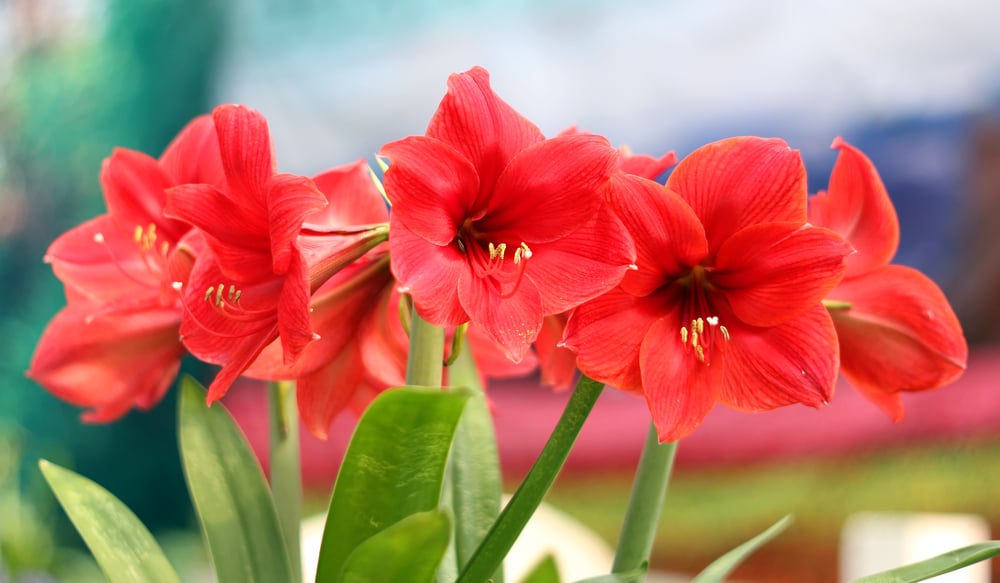Table of Contents
Typically grown as houseplants, Amaryllis is mainly known for its spectacular flowers in various hues. It is a plant native to South America, and the name is derived from the Greek Origins ‘Amarysso’, which means ‘to sparkle’. It belongs to the South American bulbous perennial Hippeastrum, which typically blooms in the winter months.
These huge trumpet-shaped flowers can grow up to 10 inches and mostly come in red and white but sometimes can also be pink, rose, burgundy, or salmon. This variety of flowers has mostly been bred since the 1800s for its large dramatic flowers, which bring a dash of colour during the dreary winter months. These are typical container plants grown indoors and mostly bloom in winter and early spring. Since they bloom just in time for the holiday season, they make wonderful holiday gifts. Some of the components in the bulbs, leaves, and stems of these plants can be toxic, so care has to be taken when growing Amaryllis indoors.
Read on to learn how these wonderful blooms can be grown right inside your house.
Key Facts About Amaryllis
Common Name – Amaryllis
Botanical Name – Hippeastrum
Type – Perennial Bulb
Full Size – up to 2 ft tall
Soil – well drained
Bloom time – winter and early spring
Varieties of Amaryllis
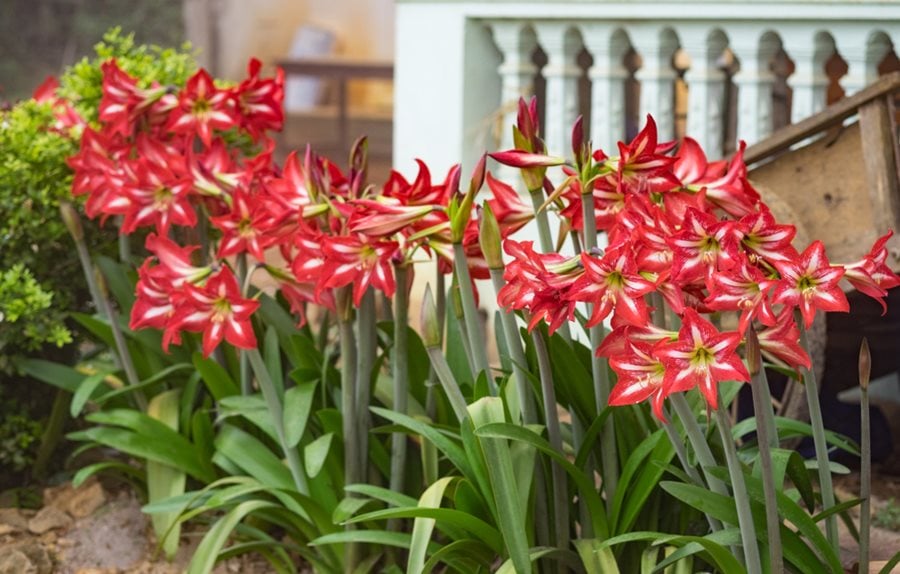
There are wide varieties of Amaryllis, and the most common choice depends on the colour of the flowers that you would want. Some of the most common varieties are
- Samba– It has red ruffled flowers with white borders. It can grow up to 22 inches.
- Apple Blossom– Another popular variety that has pink and white blooms with green throats.
- Summertime– This plant has 7-10 inch flowers with a unique watermelon pink colour with a green centre and cranberry rays.
- Red Lion– This plant blooms red velvet flowers with white stamens
- Faro– This plant has one of the most delicate flowers in salmon and white. The blooms are also smaller.
- Matterhorn– The most pristine pure white blooms with green throats.
- Ice Queen– Beautiful white flowers with green throats.
- Fairytale– It has striped red and white flowers with slender stems.
Growing AmaryllisIndoors
1. Choosing a Container
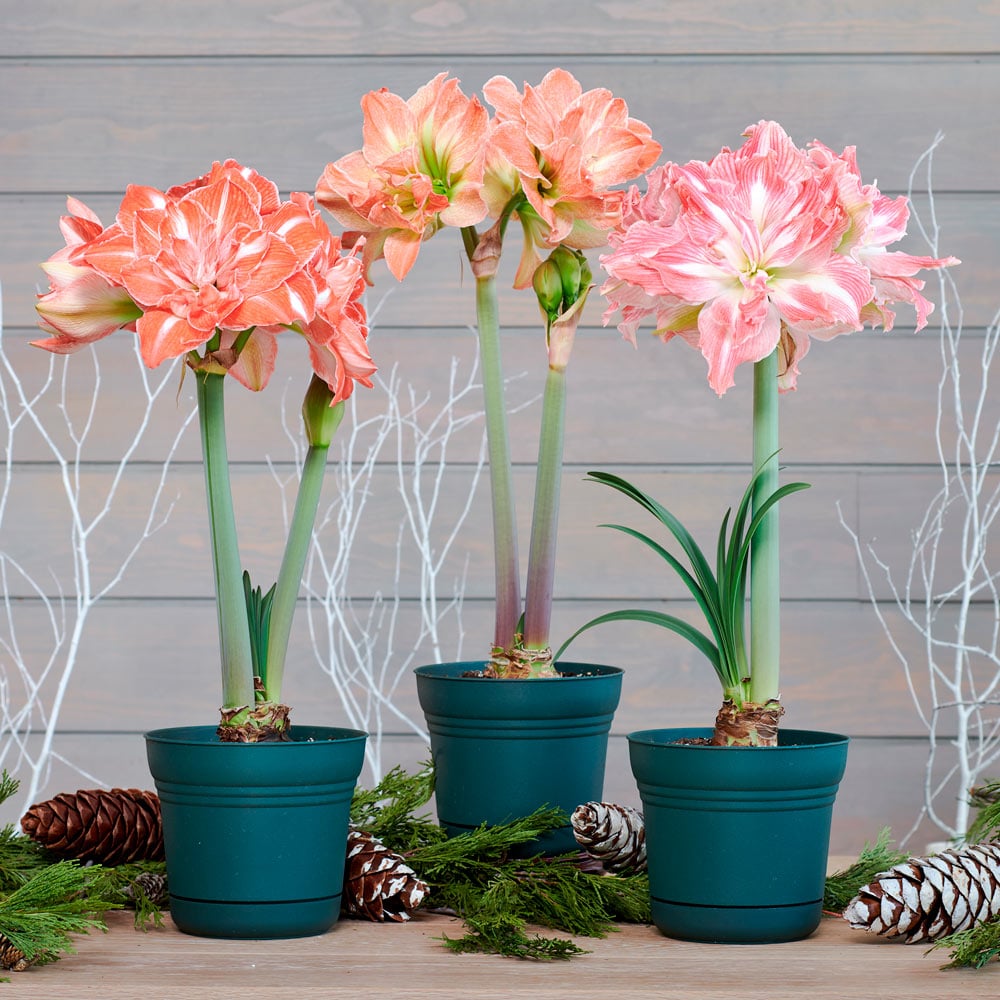
When planting Amaryllis bulbs, it is important to choose a container that is just about enough to accommodate the plant. This is because they tend to thrive better when their roots are slightly constricted. A container which measures about 8 inches deep and 5 inches wide is sufficient. It is best to choose a container that showcases the beautiful blooms, and most decorative ceramic pots would make great containers.
Using a shallow pot is ideal as it constricts the amount of compost at the base too. Amaryllis bulbs develop rot in soggy conditions. These plants require well-drained soil, so choosing a container with good drainage at the base is essential.
2. Soil
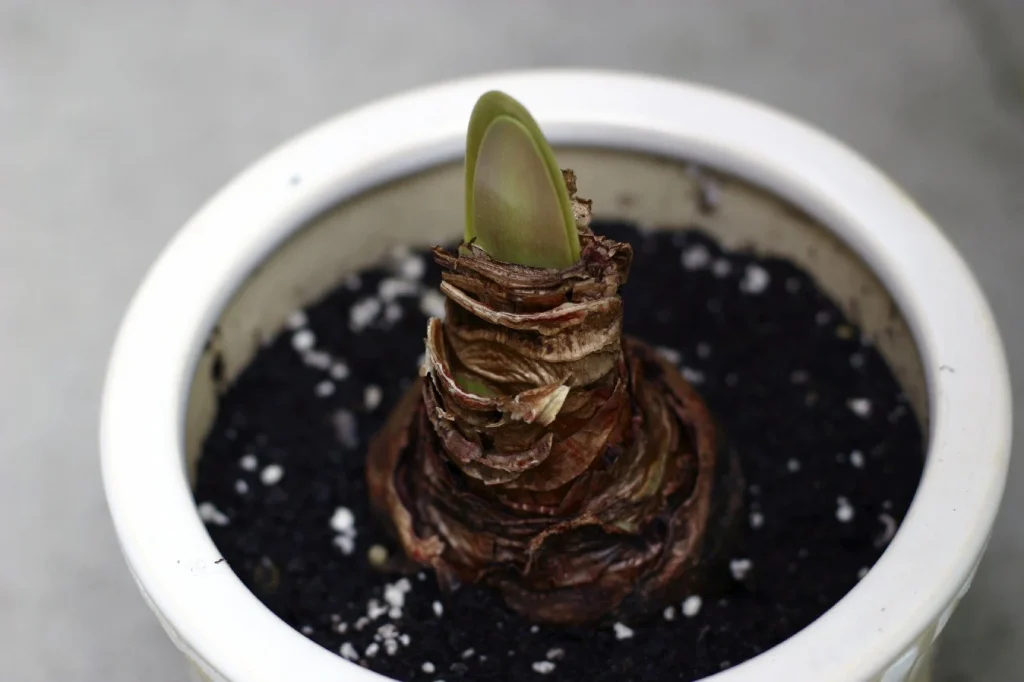
Amaryllis bulbs don’t need much spacing, and they quite prefer being slightly crowded, so there is not much requirement for potting mix too. These plants prefer well-draining soil with high organic matter. You can use a potting mix which is part loan, part sand and part compost for good growing conditions. Add enough gritty material so that the soil is well draining. It is necessary that the top third of the bulb is exposed when you plant the bulb.
3. Location
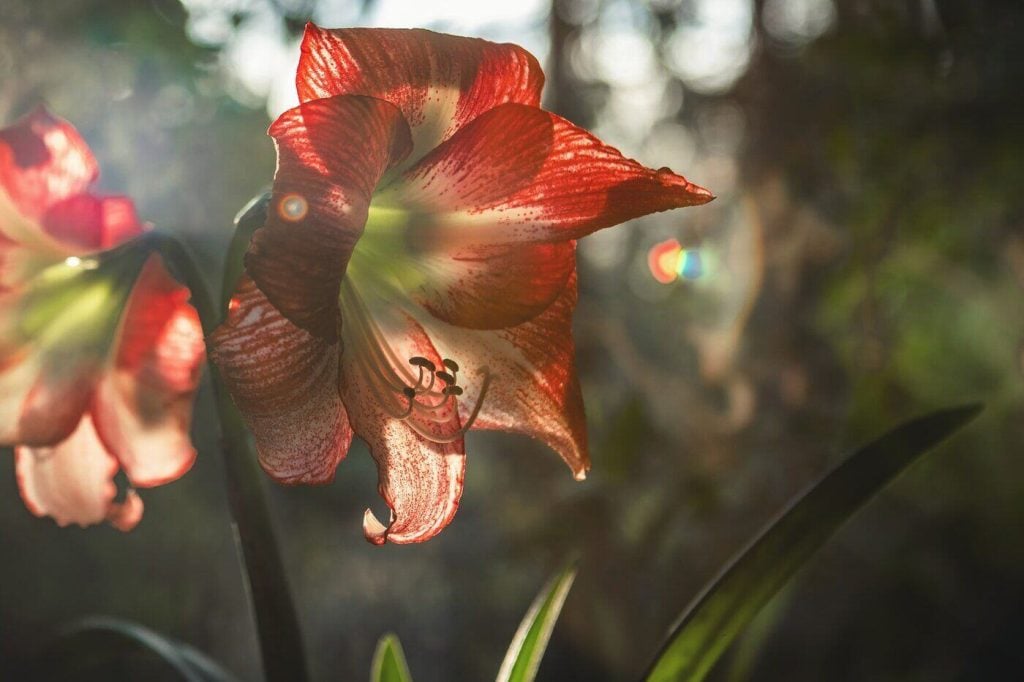
Amaryllis needs a mix of direct and indirect light. It is best to place the pot near a window or door which receives indirect light with some morning sun for a few hours. These plants prefer partial sun conditions.
Planting and Growing Amaryllis in Containers
1. Choosing the Bulb
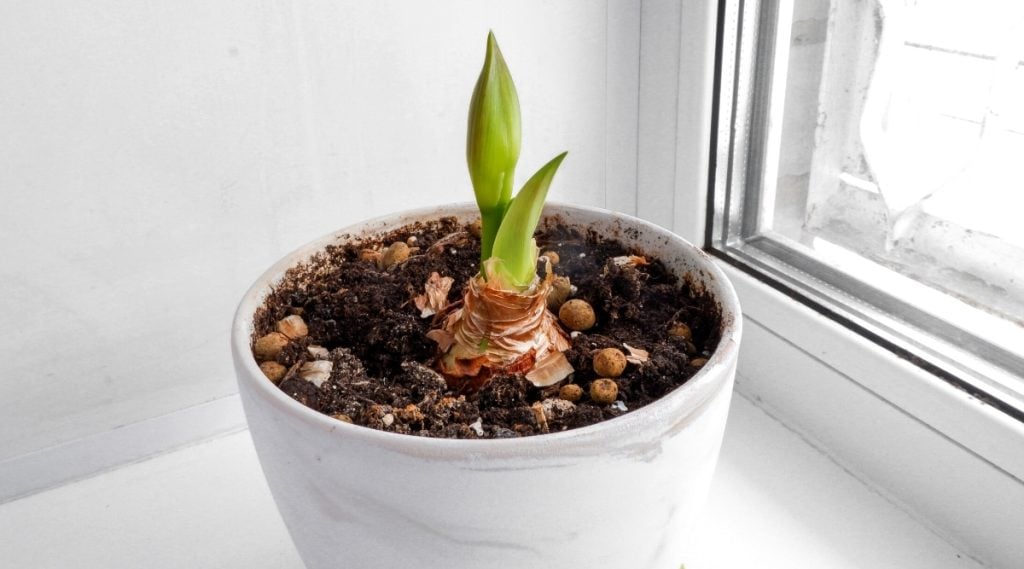
One bulb of the Amaryllis can produce up to 4 flowers and 2 stems. Big bulbs produce big flowers, so it is best to choose the biggest bulb you can find. Before planting, soak the bulb in lukewarm water for a few hours.
2. Prepping the Pot and Soil
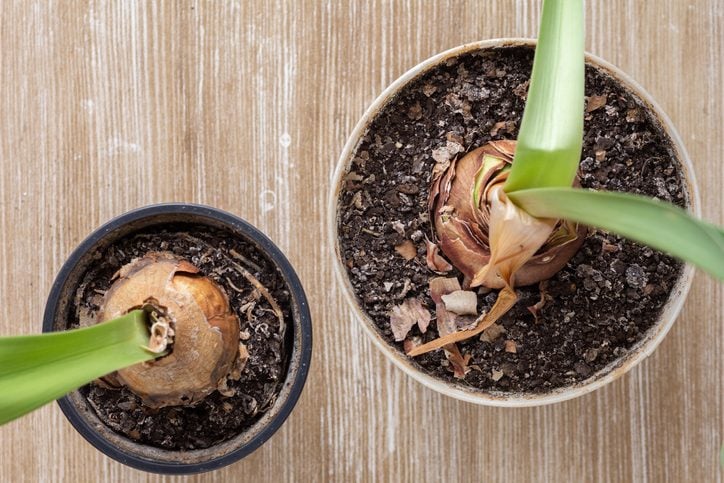
Add the potting mix to the container and sprinkle it with lukewarm water. The soil should be just moist and never soggy. Fill the soil only halfway into the container. The bulb has to be placed with the upper third exposed, so filling the soil halfway helps.
3. Placing the Bulb
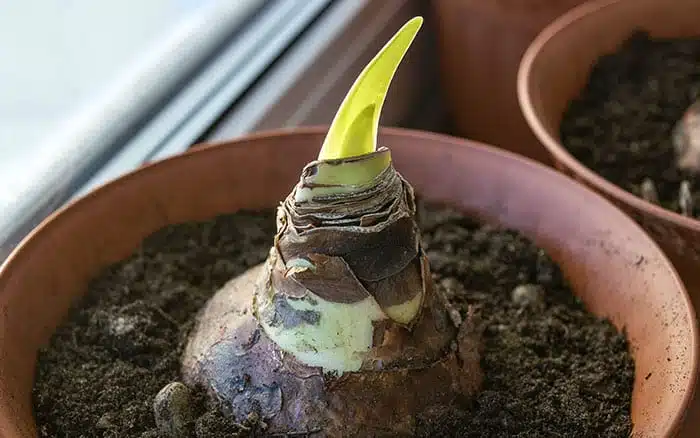
Choose a bulb that is firm and has a lot of roots at the base. Place it in the pot such that the upper third of the bulb will be exposed above the soil. Add potting mix around the bulb and pat down. Water gently so that it is just moist.
Aftercare
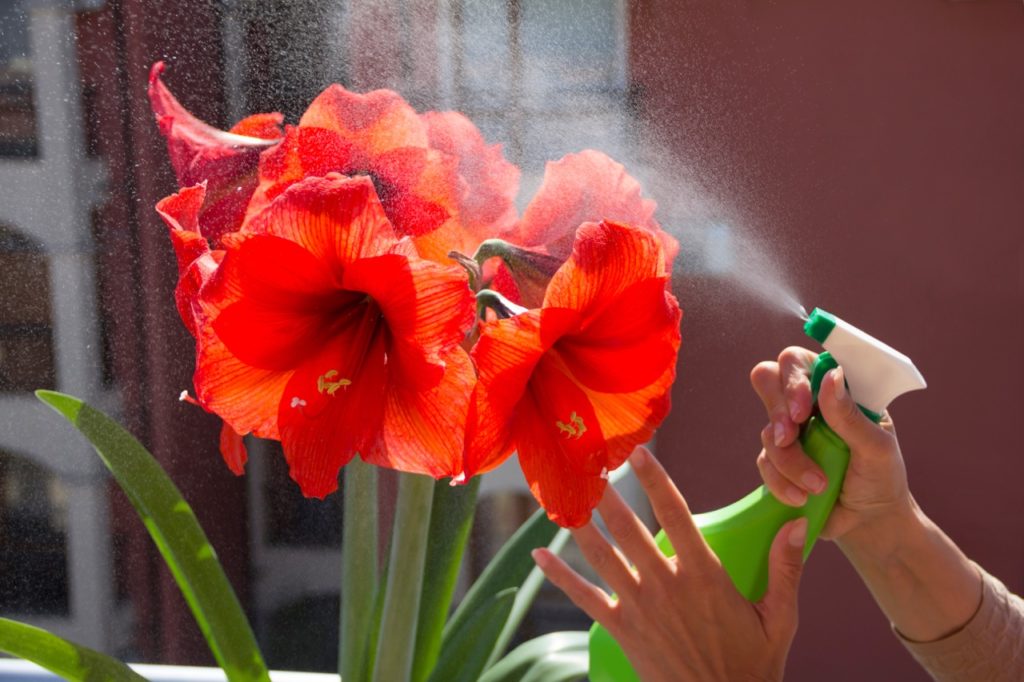
After planting, the containers need to be placed in a dark area till the shoots emerge. Once the shoot emerges, move it to a bright location in direct sunlight till it blooms. It is best to keep it in partial sun conditions for the entire flowering period.
Once the flowering period has ended and flowers have faded, keep them in plenty of sunlight so that the bulb is energised for growth next season. Later in the fall, bring the plant indoors to a dark location to revive them for active growth.
Propagating Amaryllis in containers
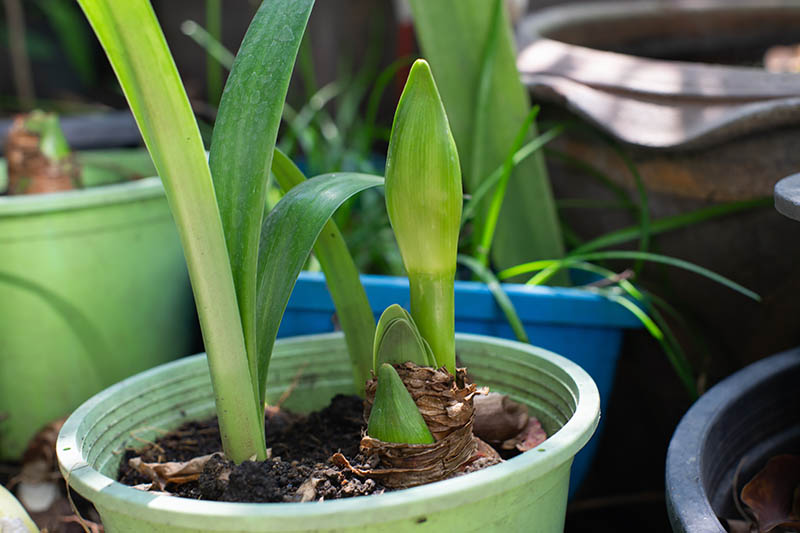
Amaryllis bulbs produce bulb offsets which can be carefully removed and repotted to grow new plants. The bulb offsets will go a few seasons before they produce any flowers. Using a spade, remove the plant from the soil. Twist the bulb offsets from the parent bulb to remove them, or you can even split them using a knife. Make sure to keep the roots intact.
Replant the parent bulb in the same container. The bulb offsets can now be used for growing Amaryllis plants and planted in prepared containers with one-third of the bulb visible above the ground. Water the plant to just moist and never soggy. New growth can take up to 4 weeks.
How to Make Amaryllis Bloom
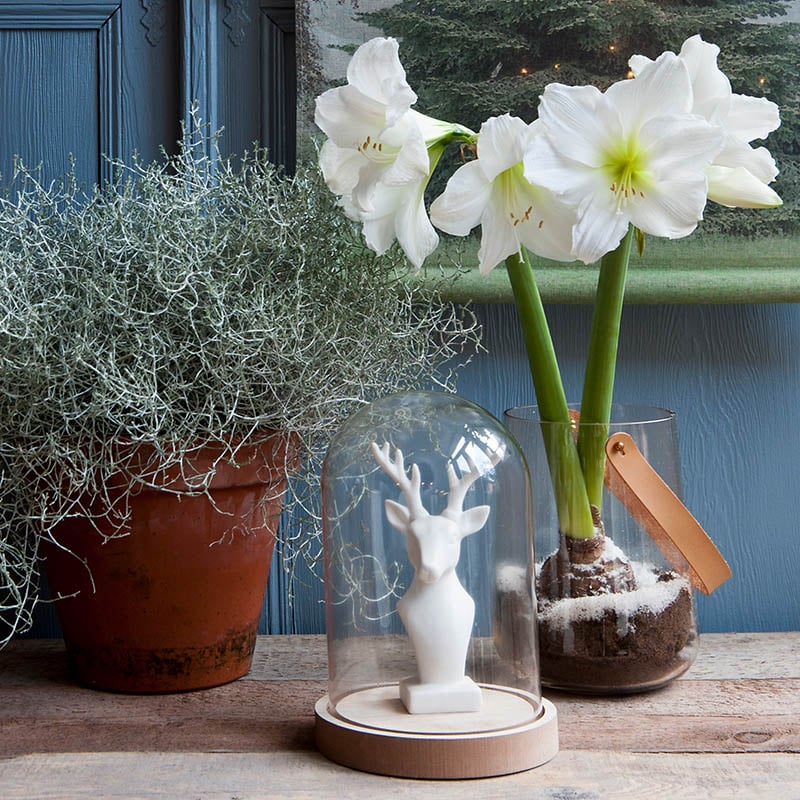
These plants typically bloom about 8 weeks after planting. These plants are typically native to regions which have 9 months of moist conditions and 3 months of dry season. So these plants enter a state of dormancy in these 3 months. Understanding this cycle is essential to know when these plants will re-bloom and care for them accordingly.
- Remove the dead flowers and stems from the plant immediately after they wither. This ensures that the plant does not expend effort in growing seed and is rather directed to bulb growth for the next season.
- After flowering, the plant goes into a growth phase and needs plenty of sunlight. Move it to a bright location for maximum benefits.
- During this time, continue to water and feed the plant regularly so that the plant can store energy before it enters the dormant phase.
- In early fall, move the plant indoors so that all the leaves can die naturally and the plant can enter dormancy.
- After a certain period of time, repot the bulbs and place them in a dark corner for the shoots to appear.
- Once the shoots appear, move it to a bright location, and your plant should be ready to bloom in just about 7-8 weeks.
How to Cut Amaryllis Flowers?
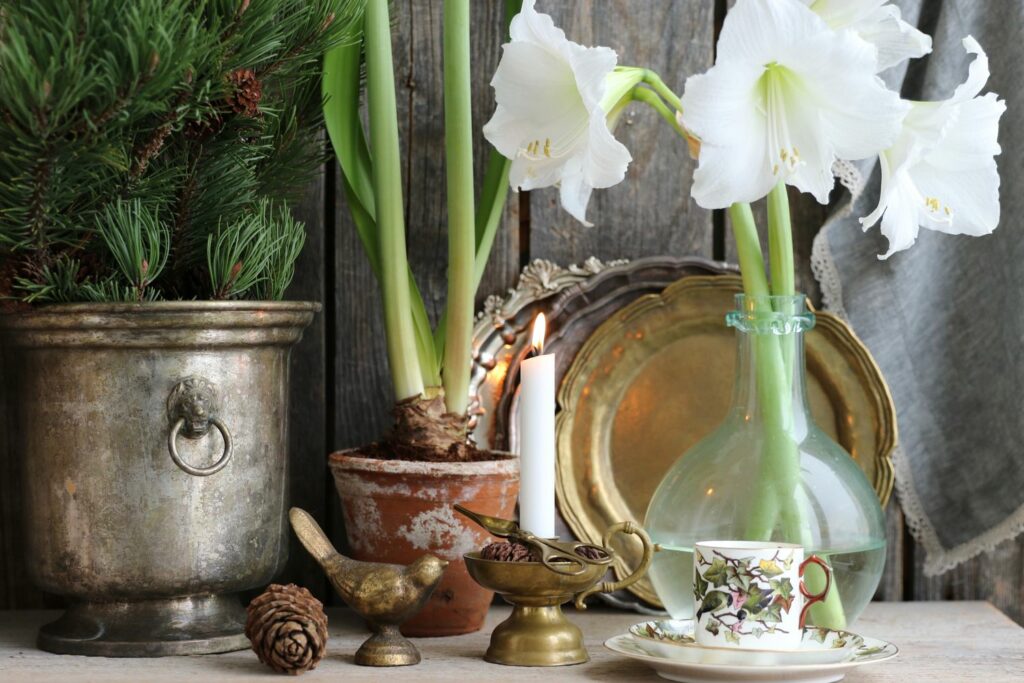
Amaryllis makes splendid gifts, and the stunning flowers are much coveted. But it is essential to care for the cut flowers.
- Cut the flowers at a 45-degree angle. Turn them upside down and fill the stalk with water and close the opening with a piece of cotton.
- Place it in a vase filled with water. Make sure to change the water every few days in both the stalk and the vase.
- The flowers will last up to 7 days or more with proper care.
Common Pests and Diseases
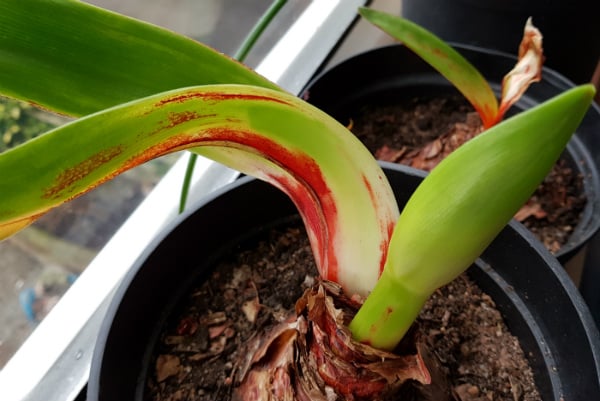
Some of the common pests are spider mites, mealybugs. Amaryllis is also susceptible to red blotch disease. It is a fungal disease that spreads at the base of the flower stalks. The leaves with this disease could become distorted and snap easily. You can reduce the risk of disease by buying a healthy bulb when you decide to plant.
Final Thoughts- Growing Amaryllis Indoors
These popular holiday gifts are extremely easy to grow indoors. They make for great gifts since they bloom just in time for the holidays. They are hardy plants that don’t need any special treatment. You just have to make sure that they are watered just right and the light conditions are ideal.
Not only are these easy to grow, but you can help them flower season after season with some care. With proper care, they can re-bloom every year, and the wonderful showy flowers are definitely something to look forward to. Some of these tips above would have been useful if you decide to plant Amaryllis in your home. Ask us any further questions in the comments.
Some Frequently Asked Questions
How Do I Get My Amaryllis to Bloom?
Once the plant has finished a time of dormancy, it’s best to move the plant to a dark place. When the shoots start to reappear, move them to a bright location and start watering and feeding them well. Soon leaves and foliage will start to appear, and a few weeks later, the flowers should bloom.
What Are the Most Common Issues with Growing Amaryllis?
The most commonly faced issues are over-watering the plant and underwatering. Overwatering will lead to soggy soil and rot, while underwatering will result in dried leaves.
Is Growing Amaryllis Indoors Toxic?
This plant contains the alkaloid lycorine, which is toxic to pets. It can cause vomiting, diarrhea, and loss of appetite if ingested. Take care to keep pets away from the plant if placed indoors.

